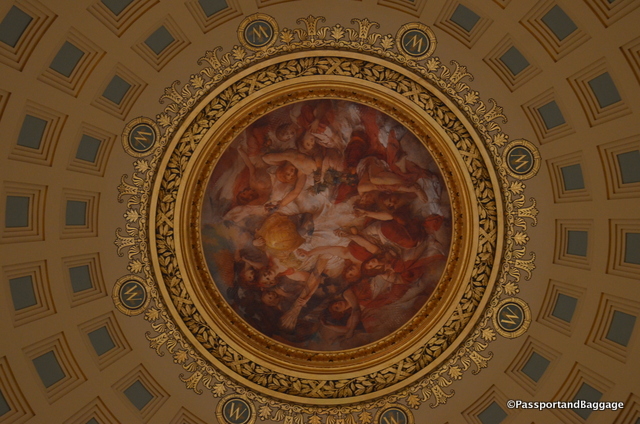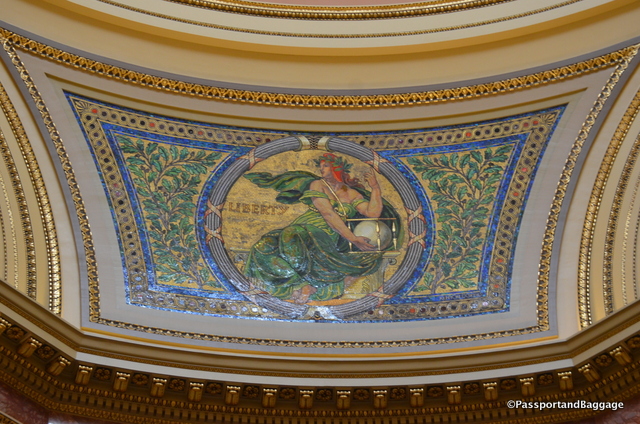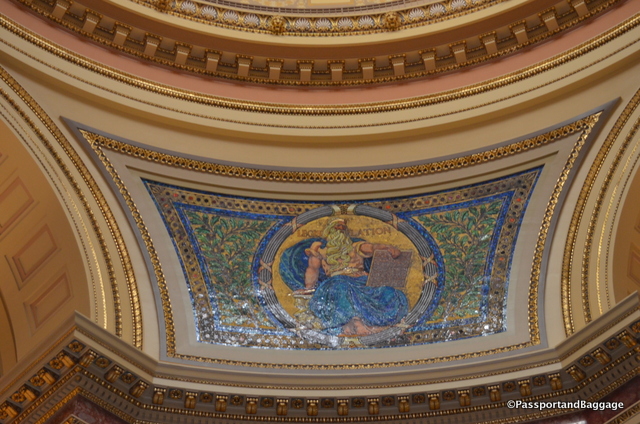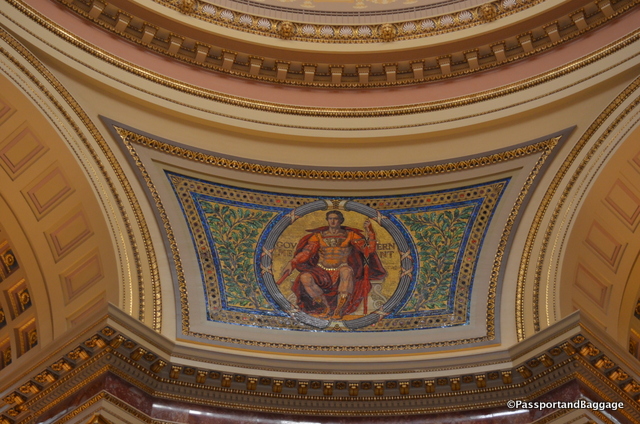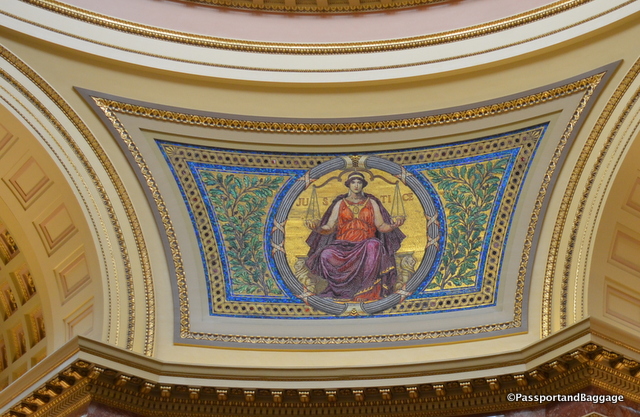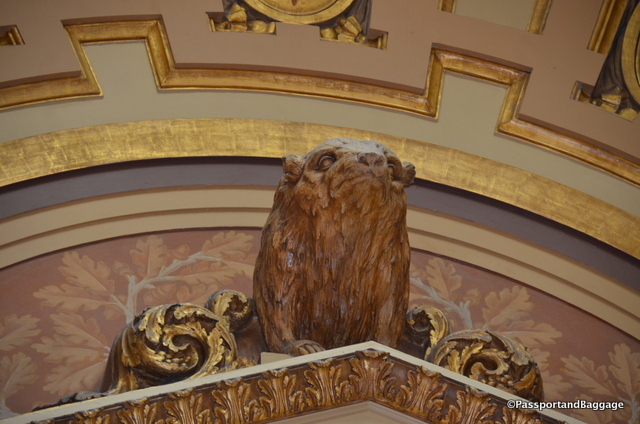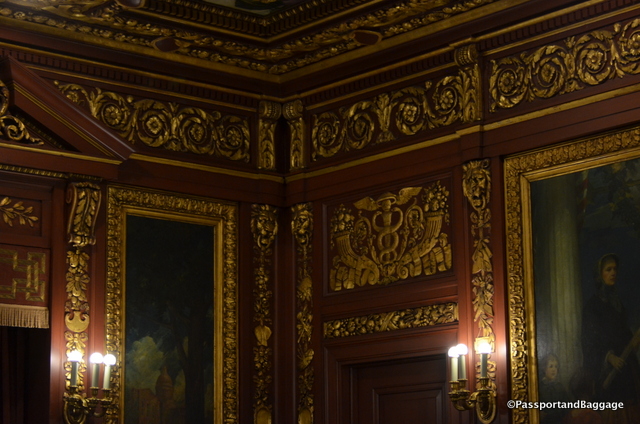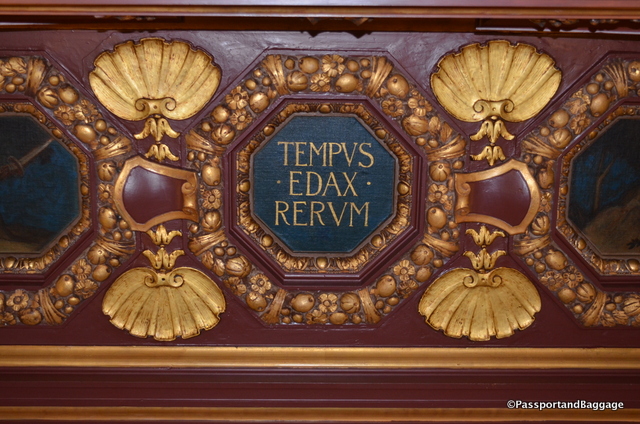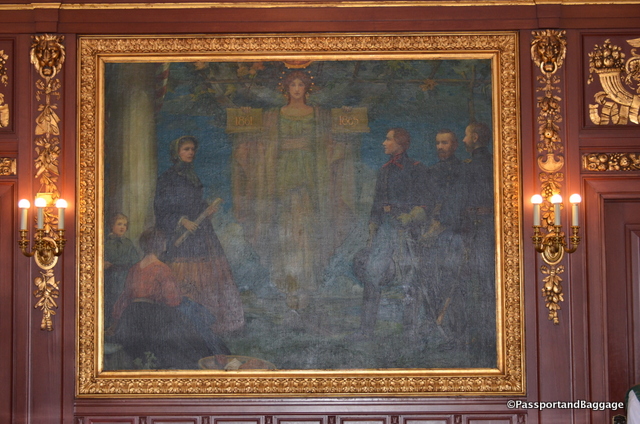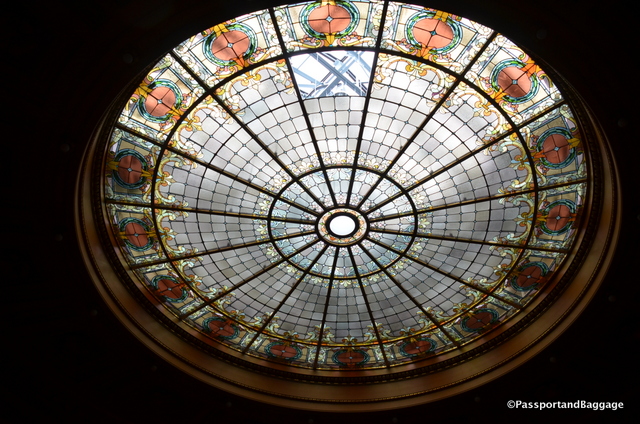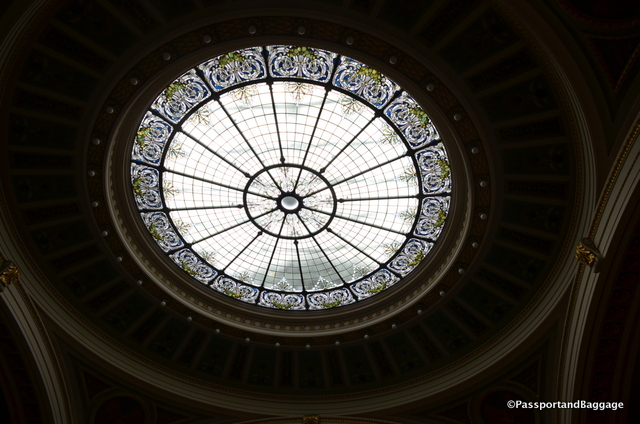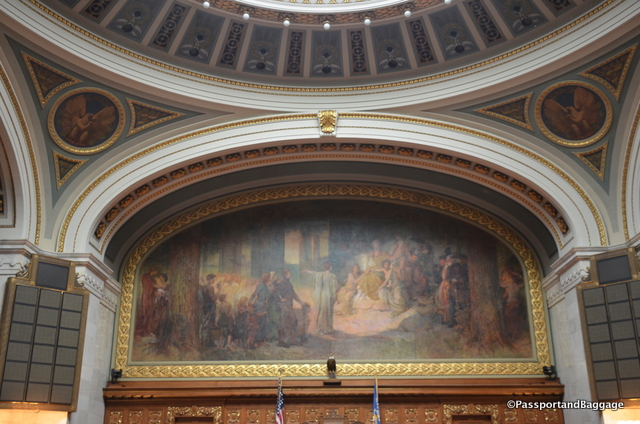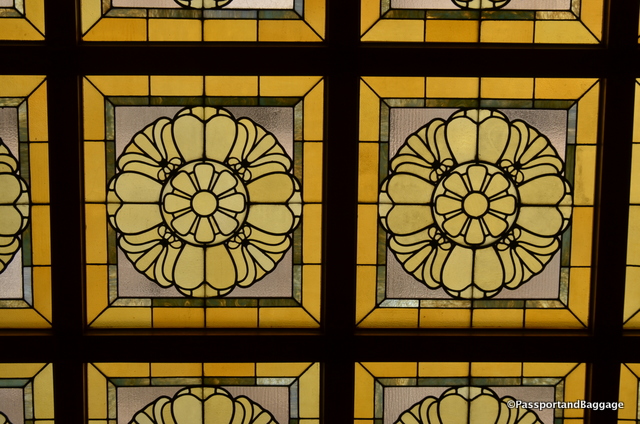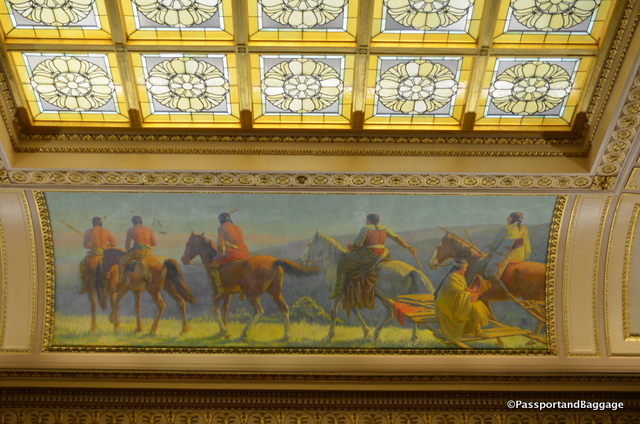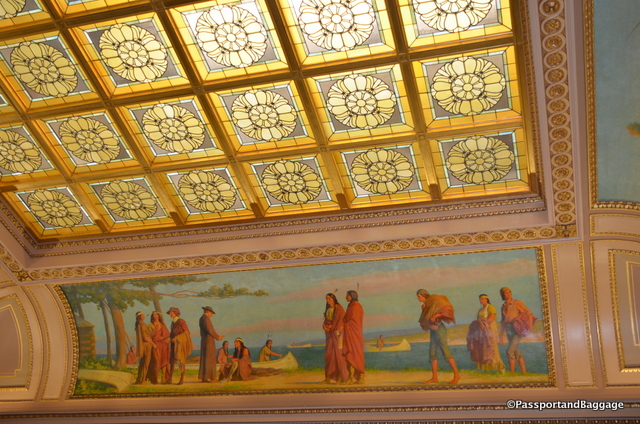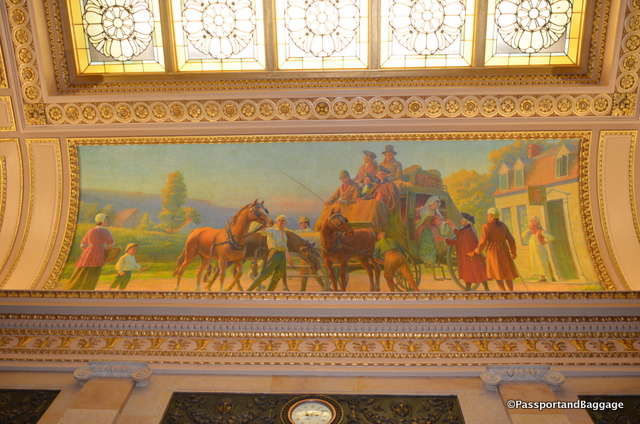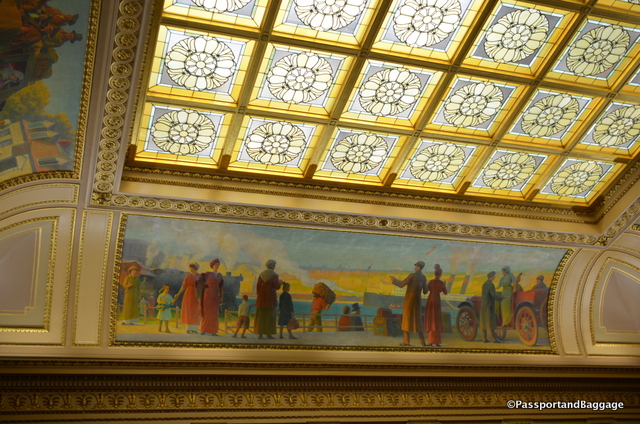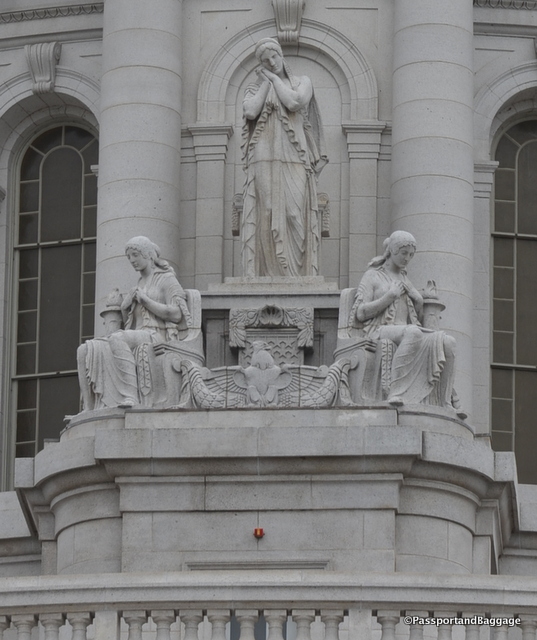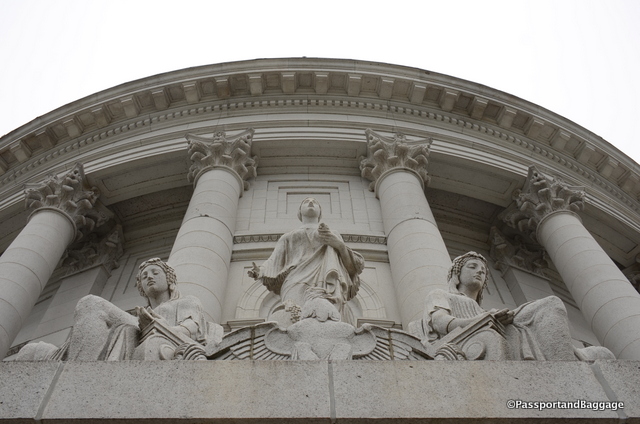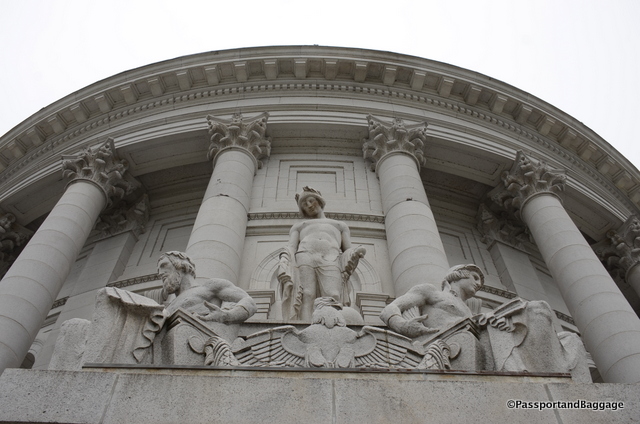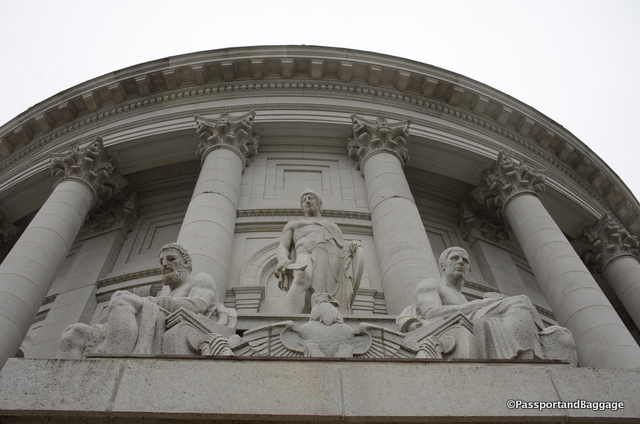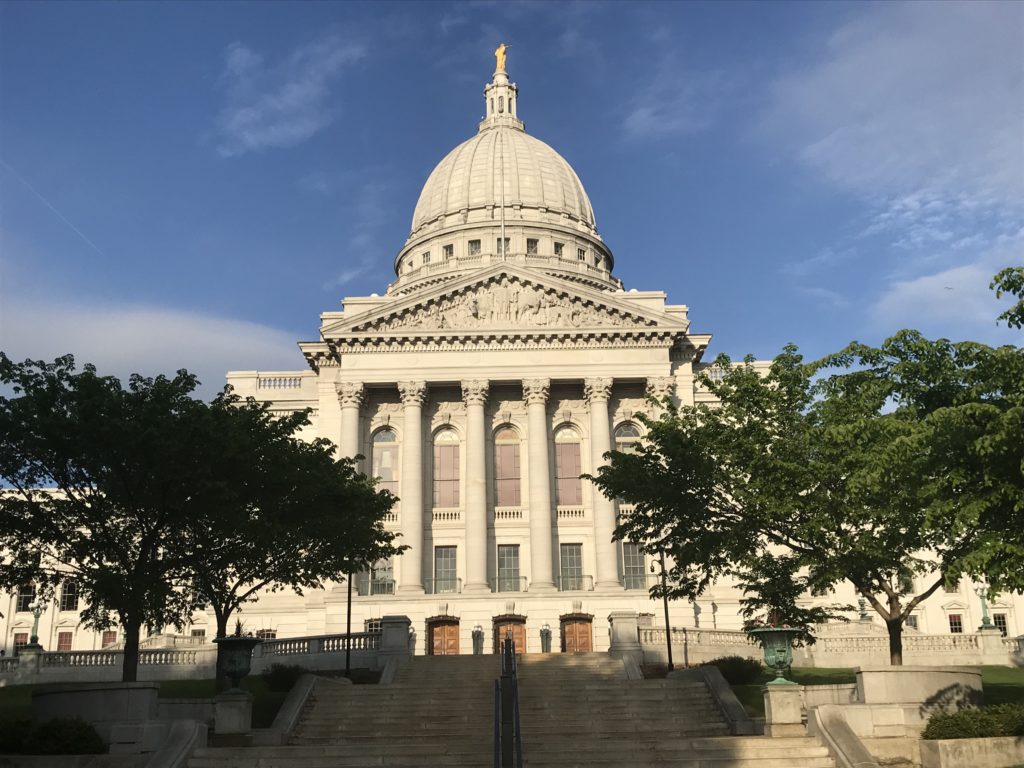 There is more information on the State Capitol of Madison than many I have seen. So I will just be touching on the art and architecture, rather than the history, of this magnificent building.
There is more information on the State Capitol of Madison than many I have seen. So I will just be touching on the art and architecture, rather than the history, of this magnificent building.
It is important to point out that the people take very seriously that this is the building of the people, so it has no metal detectors and should you so desire, you can walk through this magnificent structure simply to get from one side of the block to the other.
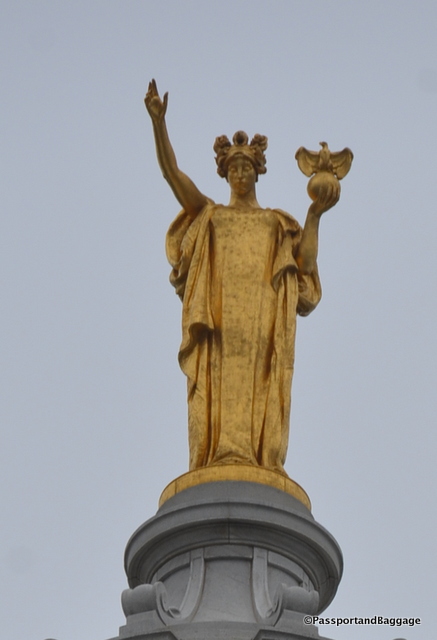 Atop the dome is “Wisconsin”, sculpted by Daniel Chester French of New York. She holds a globe with an eagle in one hand and wears a helmet of the state animal on her head. The state animal is a badger. This came about when in the 1820s, mining had become a huge business, with thousands of men coming to find their fortune.
Atop the dome is “Wisconsin”, sculpted by Daniel Chester French of New York. She holds a globe with an eagle in one hand and wears a helmet of the state animal on her head. The state animal is a badger. This came about when in the 1820s, mining had become a huge business, with thousands of men coming to find their fortune.
The miners made temporary homes by digging caves into the rock of the mines, similar to tunnels that badgers dig for shelter. The miners came to be known as “badger boys” or “badgers,” and the name stuck.
Looking up to the top of the interior dome you will see the painting “Resources of Wisconsin” painted by Edwin Blashfield of New York at a cost of $8000. In this photo, there is a woman with a red headdress representing Wisconsin. She is holding a sheaf of wheat, which symbolized Wisconsin’s roots as the breadbasket of the area, before dairy took over the econonmy. There are others products in the scene, such as tobacco, lead, fruit and fish. The paintings size is decieving due to its distance from the ground, but it is only eight feet smaller in diameter than the opening of the first floor rotunda, or a huge 34 feet in diameter. The outer ring of the painting is actually a balcony.
There are four of these magnificent glass mosaics in the rotunda. They were designed by Kenyon Cox of Warren, Ohio at a total cost $20,000. They each contain about 100,000 pieces of glass tile and represent the three branches of government and Liberty.
The highly ornamented red and gold leaf room on the first floor in the East Wing is the Governor’s Conference Room. It is designed after the small council chamber in the Doge’s palace in Venice.
There are many allegorical paintings throughout the room done by Hugo Ballin from New York. These paintings cost $25,000.
This painting shows Wisconsin’s role in the Civil War. The woman in the center is Unity. The woman on the left is Cordelia Harvey, widow of Wisconsin Governor Louis Harvey, During the war, Governor Harvey had asked Lincoln to establish military hospitals in the north, but Harvey died before this could happen, and his widow worked tirelessly to establish three hospitals.
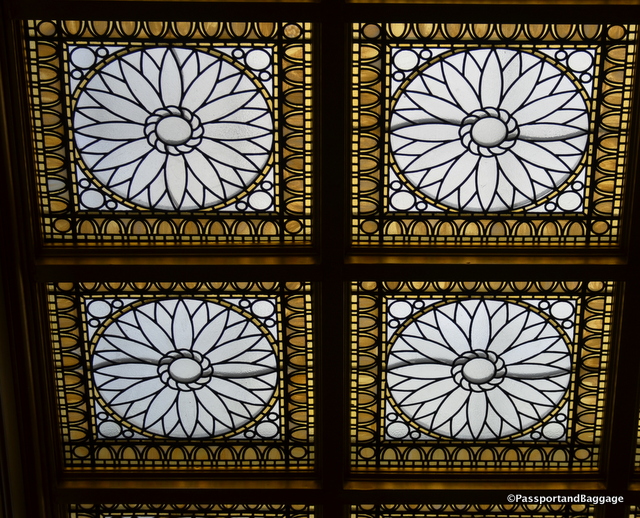 These are a few panes from the skylight of the Supreme Court. This is one of four skylights in the Capitol, all made of low-toned leaded glass with metal halide lights above.
These are a few panes from the skylight of the Supreme Court. This is one of four skylights in the Capitol, all made of low-toned leaded glass with metal halide lights above.
There are four murals on the walls of the court painted by Albert Herter of New York at a cost of $28,000. They cover the historical events that influence Wisconsin Law.
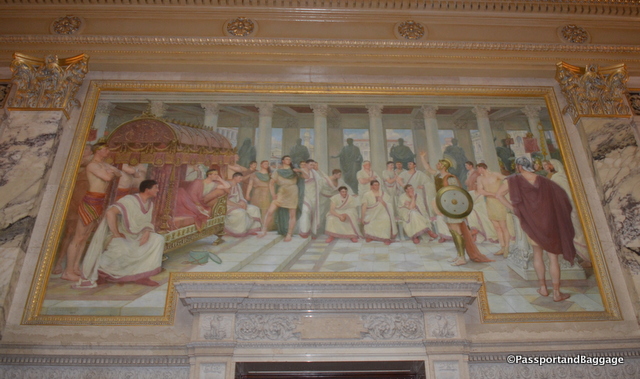
Caesar Augustus Octavius presiding over the trial of a soldier representing Roman civil law, which is written down in codes or statutes in contrast to English common law which is based on custom and usage.

In the painting is the artist’s son, Christian Herter who later served as Governor of Massachusetts and Secretary of State under Dwight D. Eisenhower.
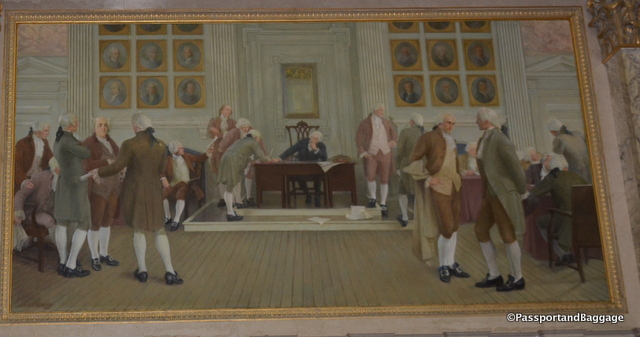
The signing of the Constitution in 1787. In the painting is Thomas Jefferson, who would not have been in the room as he did not sign, nor help write the constitution. It is possible the artist included him for his influence on American law.
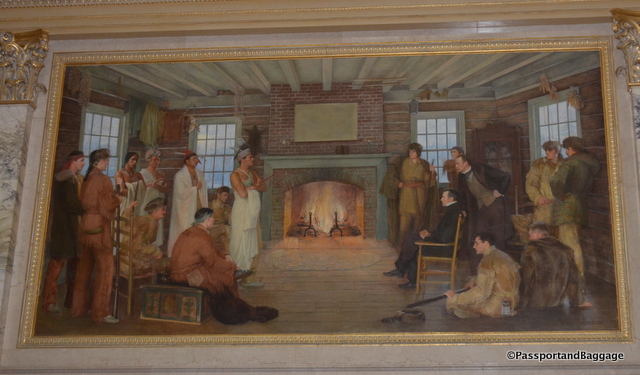
This painting is an example of territorial laws. Wisconsin was still a part of Michigan territory at the time. This shows the trial of Menominee Chief Oshkosh when he was accused of killing a Pawnee and brought before James Doty. While the jury found him guilty, Doty ruled that territorial law could not be applied because Oshkosh had, in fact, followed the legal system of his tribal laws.
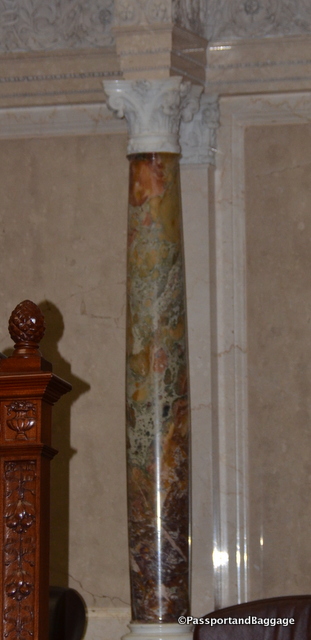
These columns sit behind the chairs of the Supreme Court Judges. They are of Benou marble from France.
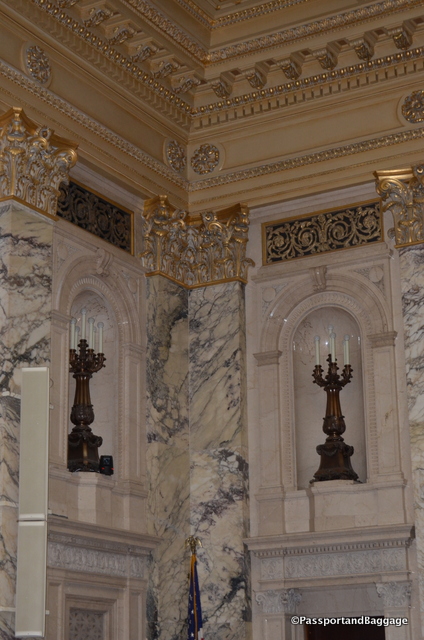
The marble panels are Formosa marble from Germany and the columns are Italian Breche Coralline marble
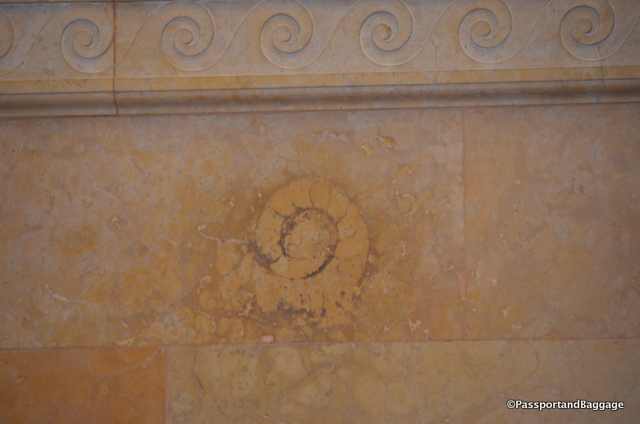
Fossils can be found in the marble throughout the Capitol, including a starfish on the North Wing stairs, this Ammonoid, Coral, Nautiloids, Gastropods, Bryozoans, Burrows, and Brachiopods.
The mural in the Senate Chamber was also painted by Kenyon Cox at a cost of $12,000 and is called “The Marriage of the Atlantic and Pacific” It commemorates the opening of the Panama Canal.
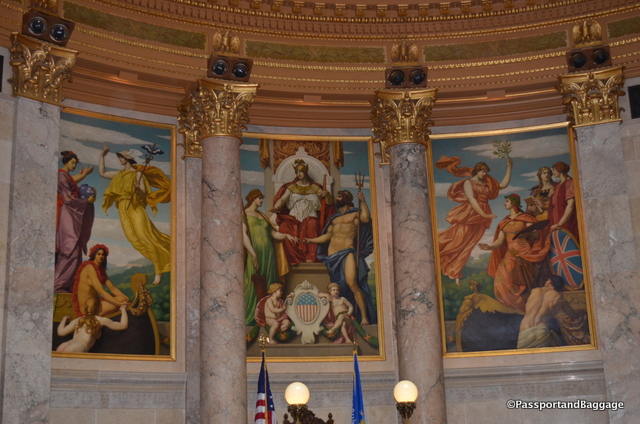
The groom represents the Atlantic Ocean and the bride the Pacific Ocean The figure in the center presiding over the wedding is America. On the right side of the painting the goddess of peace welcomes the nations of Germany, France, and Great Britain, and on the left, the god of commerce welcomes the nations of China, Japan, and Polynesia.
This difficult to photograph mural is by Edwin Blashfield, titled Wisconsin it was commissioned at a cost of $15,000. It illustrates the past, present and future.
There are four murals in the North Hearing Room painted by Charles Yardley Turner of New York at a cost of $20,000.
This room was originally used by the Railroad Commission so the murals reflect the history of transportation.
The exterior sculpture of the capitol is as exquisite as the interior. They are all by Karl Bitter, a Vienna native who came to New York in 1889. His work can be found in such great architecture as the Biltmore in North Carolina, Trinity Church in New York City and the Metropolitan Museum of Art.
This is just a small soupcon of what the Wisconson State Capitol offers. Free tours are available every day of the year, except New Year’s Day, Easter, Thanksgiving, Christmas Eve and Christmas. Plan on spending 45-55 minutes for a tour.
